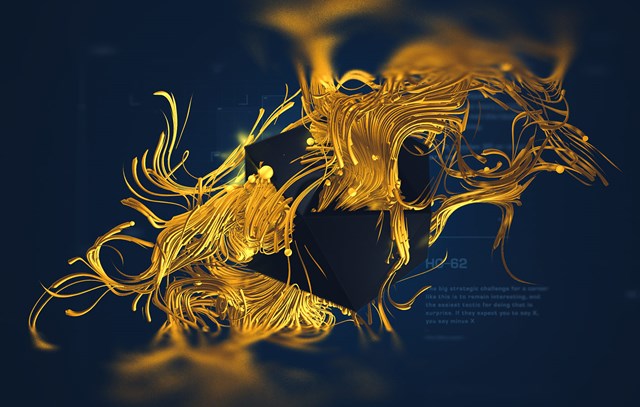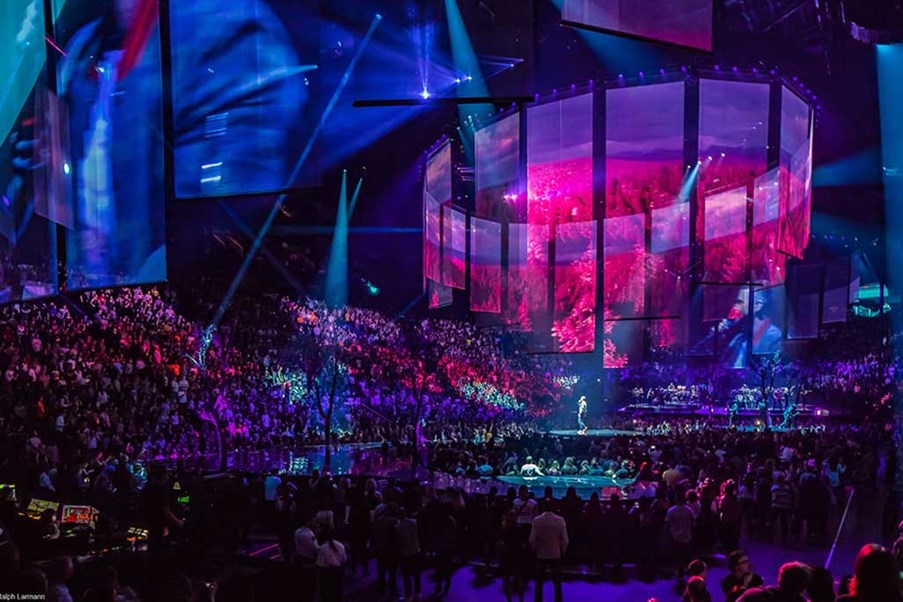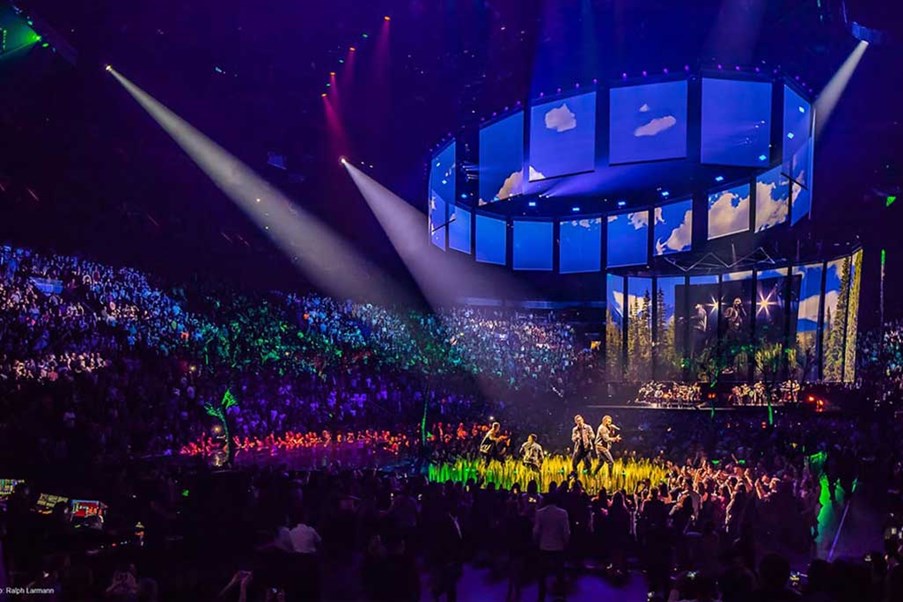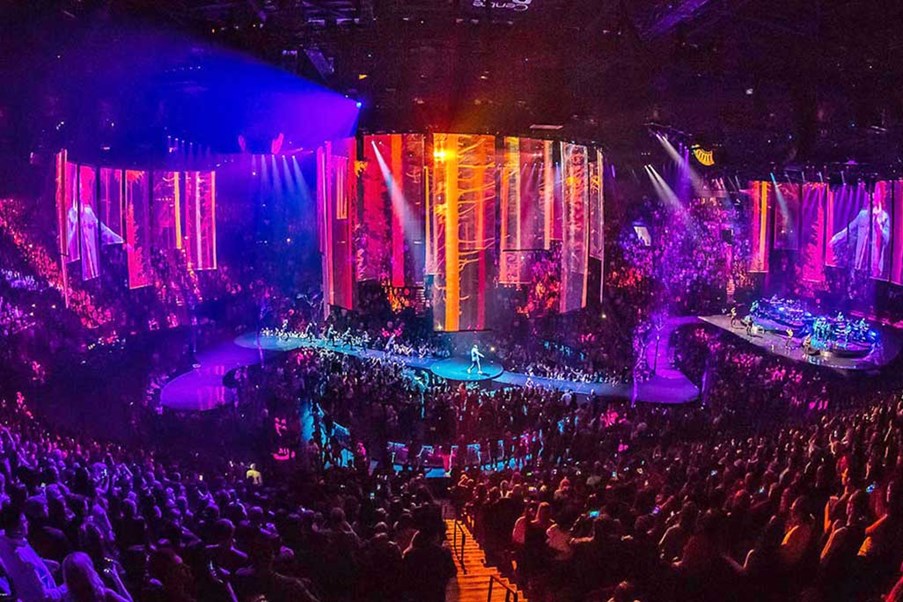gx 2c
The gx 2c is an award-winning machine featuring eight 3G-SDI inputs and 2x 10GbE network ports, as well as 10-bit and HDR support to match your creative demands.
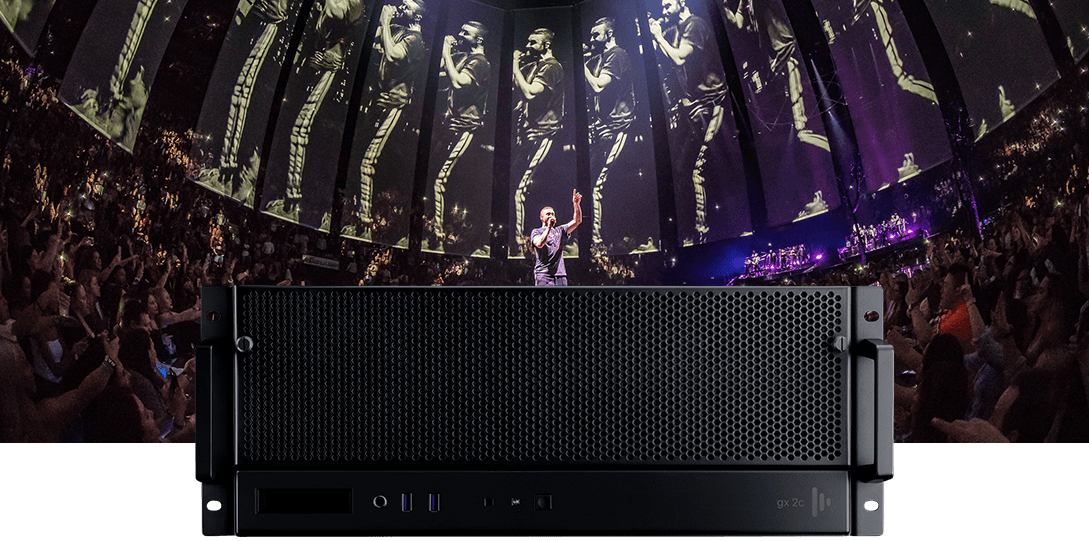
Interested in learning more?
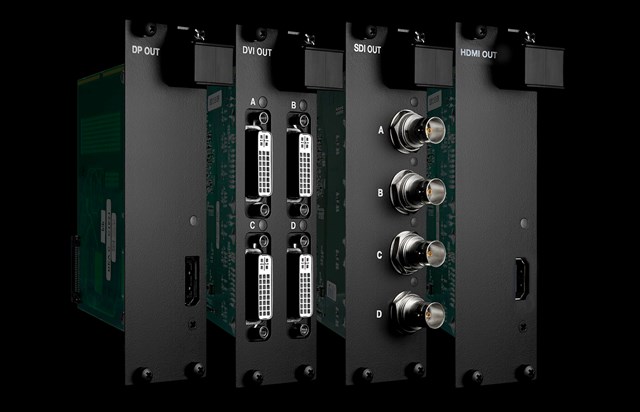
![]()
storage for longer & higher quality content
![]()
10-bit & HDR support
![]()
future proofs the server investment
More capture
8x 3G-SDI inputs unlocks new workflows for broadcast and live production with the ability to use more live feeds than possible with its gx 2 predecessor.
Scale and fit
Go beyond the power of a single server solution into distributed systems, with many servers working as one to create a seamless immersive experience.
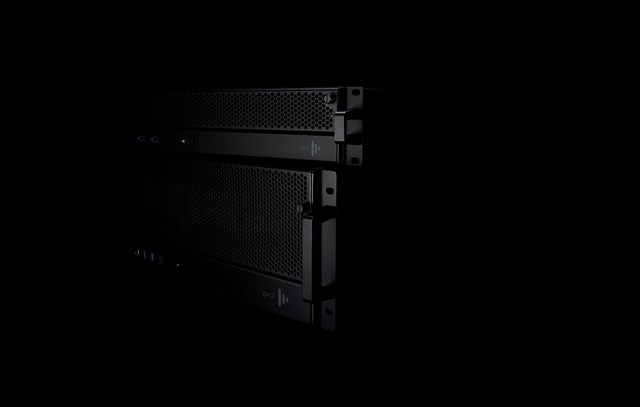
Video playback
Playback with 2x 4K outputs, which are also 10-bit capable of pushing 38,433 Notchmarks.
Capture
Capture up to two 4K sources at 60fps (2160p60); or up to eight 3G-SDI sources at 60fps (1080p60).
The inputs are also 10-bit capable, with the same low latency as existing disguise pro and gx range machines.
Storage
4TB NVMe drive fitted freeing creatives to work with high quality codecs, including support for NotchLC.
10-bit support
The gx 2c supports 10-bit content playback and 10-bit displays.
HDR support
Supports HDR content and provides a means of applying colour profiles. Consisting of a colour space and a gamma curve, users can set a colour profile to their content, or capture live video from HDR cameras and disguise performs a real-time conversion to the HDR display device - even changing between HDR standards.
Genlock
The workstation grade GPUs in all gx range machines allows users to genlock machines to form a bigger media server system with many servers working as one.
Networking
2x 10GbE network ports enabling fast content transfer.
VFC Technology
The gx 2c ships standard with HDMI 2.0 VFC output cards to drive 2x 4K outputs from one machine.
The swappable VFC technology future proofs the investment as users can output DisplayPort, Quad-DVI or Quad-SDI by fitting the optional VFC cards, as well as mixing signal formats and resolution types in the same project.
Technical specifications
| System Connectivity - I/O | Video Output | 1x DisplayPort 1.2 (GUI) 2x VFC Output Slots Ships standard with HDMI 2.0 VFC cards. Different Video Format Conversion Cards also available, refer to VFC specifications |
| Video Input | 8x 3G-SDI (HD-BNC connectors) | |
| Video Sync | BNC Genlock |
| Media File Specifications | Video Playback | .mov (anim, DXV, Hap, Hap Q, Hap Alpha, NotchLC) |
| Still Image Format | .png, .jpeg, .bmp, .tiff, .tga, .dpx | |
| 3D Mesh Format | .obj | |
| Audio File Format | .mp3, .wav (44.1kHz, 16-bit, stereo) | |
| Audio | RME Professional | |
| Analogue Audio | 2x Balanced XLR Output 2x Balanced XLR Input 1x ¼” Headphones Jack |
|
| Digital Audio | ADAT/SPDIF I/O | |
| MIDI | 1x In, 1x Out |
| Physical Specifications | Mounting System | 4U 19” rack mount |
| Unit Dimensions | W: 445mm (17.52'') H: 178mm (7'') D: 593mm (23.35'') |
|
| Unit Weight | EST 16.8kg | |
| Unit & Rack Handles | 621mm (24.45'') | |
| Environmental Tolerances | Temperature: 5-35°C (40°-95°F) Humidity: 5%-95% (non-condensing) Altitude: 0-8850 ft (0-2700m) |
| Hardware Specifications | CPU | Intel® Xeon® Quad-Core 3.7Ghz |
| Memory | 64GB DDR4 RAM | |
| Storage | 3.84TB SSD | |
| Network | General Network: 1x Gigabit LAN Artnet: 1x Gigabit LAN Media Network: 2x 10 Gb/sec LAN |
|
| Voltage | 100-240V, 50-60Hz For countries with variable power supply, we recommend a UPS to provide a consistent voltage |
|
| Power Consumption | 517 W adjusted |
| Software Features | Operating System | Windows Enterprise SAC |
| Bundled Software | disguise Proprietary | Full Production Suite |
| 3rd Party | Notch Playback License (2 years) |
| Support, Updates and Warranties | License subscription package includes | - Free software upgrades for the life of the machine - 2 year return to base hardware warranty (plus options to extend warranty length) |
Power to respond
We regularly test our media servers to ensure that they perform to the highest standards. Below are two sets of data for playback performance and capture latency for the gx 2c.

Playback
The following table shows how many layers can simultaneously be played back per codec
gx 2c
|
Video codec |
Content data rate |
Max layers |
|
HD HAP 30 |
27.8 MB/s |
48 |
|
HD HAPQ 30 |
31.3 MB/s |
40 |
|
HD Animation 30 |
107 MB/s |
21 |
|
HD TIFF Sequence 30 |
237 MB/s |
12 |
|
UHD HAP 30 |
95.4 MB/s |
23 |
|
UHD HAPQ 30 |
143 MB/s |
16 |
|
UHD Animation 30 |
697 MB/s |
4 |
|
HD NotchLC 30 |
63.51 MB/s |
35 |
|
UHD NotchLC 30 |
233.91 MB/s |
12 |
|
UHD DPX Sequence, 8-bit, RGB, 30 |
712 MB/s |
4 |
|
UHD DPX Sequence, 8-bit, RGB, 60 |
1428 MB/s |
1 |
|
UHD DPX Sequence, 10-bit, RGB, 30 |
949 MB/s |
3 |
|
UHD DPX Sequence, 10-bit, RGB, 60 |
1898 MB/s |
1 |
|
UHD TGA Sequence, 8-bit, RGB, 30 |
711 MB/s |
8 |
|
UHD TGA Sequence, 8-bit, RGB, 60 |
1422 MB/s |
3 |
|
UHD TGA Sequence, 8-bit, RGBA, 30 |
949 MB/s |
6 |
|
UHD TGA Sequence, 8-bit, RGBA, 60 |
1898 MB/s |
1 |
|
UHD TIFF Sequence, 8-bit, RGB, 30 |
712 MB/s |
7 |
|
UHD TIFF Sequence, 8-bit, RGB, 60 |
1424 MB/s |
3 |
|
UHD TIFF Sequence, 8-bit, RGBA, 30 |
949 MB/s |
6 |
|
UHD TIFF Sequence, 8-bit, RGBA, 60 |
1898 MB/s |
2 |
Notes:
- All content is 30 fps
- Readings are taken from a slave machine
- VFC-compatible machines run with pass-through style cards (HDMI or DP)
- 60Hz project
- Genlock on all machines which support it
- One unique video file per layer, all mapped onto one screen
- Absolute maximum level of performance
- One more layer means the system starts to drop frames
- Measured against 16.0.4, build 60742
Full description of the methodology employed and link to the project used for testing to be made available soon. Please check back.
Capture Latency
The following table provides data on how many frames of latency the gx 2c requires from capture to output.
gx 2c SDI
|
Refresh rate |
Normal mode (frames) |
Low latency mode (frames) |
Ultra-low latency (frames) |
|
60Hz |
5 |
4 |
3 |
|
50Hz |
5 |
4 |
3 |
|
30Hz |
5 |
4 |
3 |
gx 2c NDI*
|
Refresh rate |
Normal mode (frames) |
Low latency mode (frames) |
Ultra-low latency (frames) |
|
60Hz |
6 |
5 |
4 |
|
50Hz |
6 |
5 |
4 |
|
30Hz |
6 |
5 |
4 |
See below for full description of the methodology employed for both SDI & NDI, as well as the link to the project used.
Full disguise latency capture methodology
Notchmarks
For Notchmark information, please refer to the link below.
![]()

